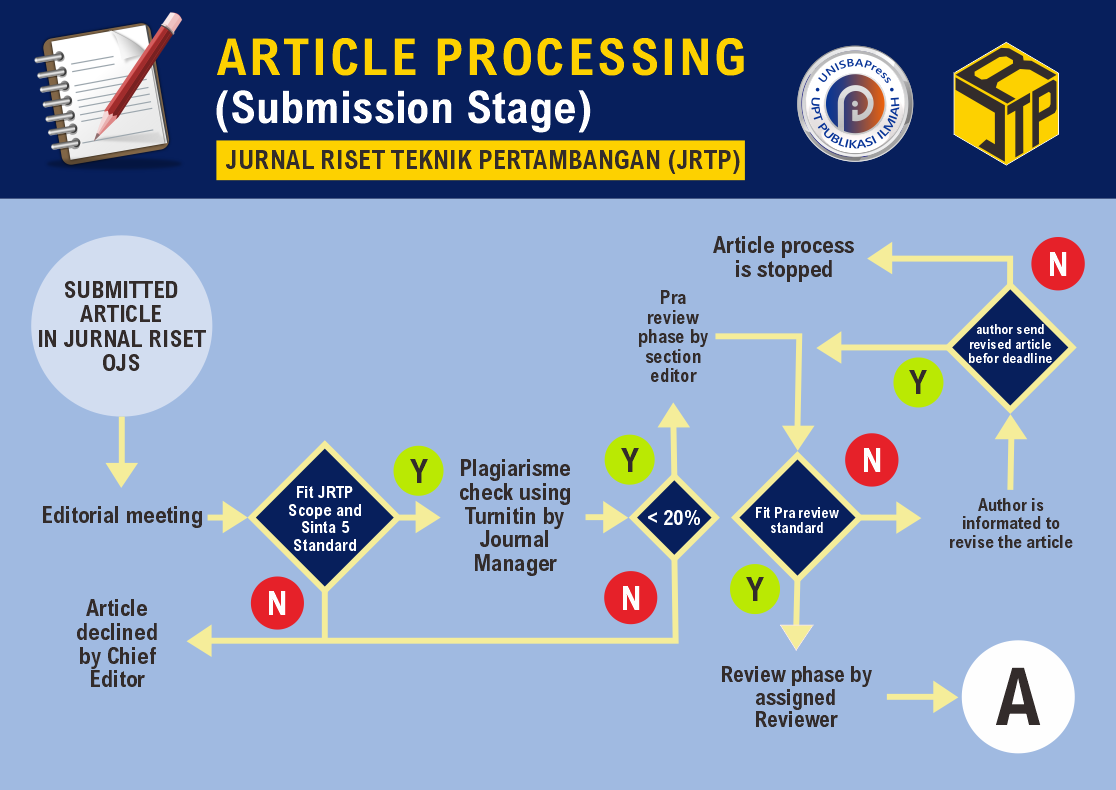Pengaruh Penambahan Fly Ash Batubara terhadap Parameter Geomekanik Tanah
DOI:
https://doi.org/10.29313/jrtp.v3i2.2847Keywords:
Klasifikasi Tanah, Kuat Geser Langsung Tanah, Material Sisipan Fly Ash BatubaraAbstract
Abstract. Soil is the result of the natural accumulation of organic and inorganic materials in the Earth's crust. The crucial strength of soil lies in its ability to support the load above and prevent subsidence. Over time, soil strength diminishes, impacting its stability. Direct Shear Tests are employed to measure soil strength. This research focuses on enhancing soil strength by incorporating fly ash as an additive material. The study involves literature review, sample collection, and laboratory tests to monitor changes in the physical and mechanical properties of clayey soil with the addition of fly ash. The results indicate that the clayey soil falls into the category of low plasticity clay, with Atterberg limits revealing a liquid limit of 40.20% and a plastic limit of 17.39%. In density tests with fly ash percentages ranging from 5% to 15%, the 11% mixture achieves the highest density at 1.150 g/cm3. Mechanical properties, such as cohesion (c) and internal friction angle (Ф), are measured at 15.2 KPa and 15.220, respectively. The findings of this research offer insights into the use of fly ash to improve soil strength, with the 11% mixture emerging as the optimal option.
Abstrak. Tanah adalah hasil akumulasi material organik dan anorganik secara alami di kerak bumi. Kekuatan tanah krusial untuk menopang beban di atasnya dan mencegah penurunan. Seiring waktu, kekuatannya berkurang, mempengaruhi stabilitasnya. Uji Geser Langsung digunakan untuk mengukur kekuatan tanah. Penelitian ini fokus pada peningkatan kekuatan tanah dengan menambahkan fly ash sebagai material sisipan. Penelitian melibatkan studi literatur, pengambilan sampel, dan uji laboratorium untuk memantau perubahan sifat fisik dan mekanik tanah lempung dengan tambahan fly ash. Hasil menunjukkan bahwa tanah lempung klasifikasi lempung plastisitas rendah. Uji Atterberg limit menghasilkan batas cair 40,20% dan batas plastis 17,39%. Pada pengujian densitas dengan persentase fly ash 5% hingga 15%, campuran 11% mencapai densitas tertinggi, yaitu 1,150 g/cm3. Sifat mekanik, seperti kohesi (c) dan sudut geser dalam (Ф), diukur masing-masing sebesar 15,2 KPa dan 15,220. Hasil penelitian ini dapat memberikan wawasan tentang penggunaan fly ash untuk meningkatkan kekuatan tanah, dengan campuran 11% menjadi opsi optimal.
References
L. D. Wesley, Mekanika Tanah. Yogyakarta: Andi, 2017.
Dwiyanto, E. Yuli Priyono, and S. Pranoto, Pemindahan Tanah Mekanis. Semarnag: Universitas Diponegoro, 2009.
S. Wedhanto, Alat Berat dan Pemindahan Tanah Mekanis. Malang: Universitas Negeri Malang, 2009.
L. W. Santosa and T. N. Adji, Karakteristik Akuifer dan Potensi Air Tanah. Yogyakarta: Gadjah Mada University Press, 2014.
D. F. Hamdan, Yuliadi, and Zaenal, “Optimasi Explosive Charge per Delay untuk Mengontrol Getaran Tanah pada Peledakan Tambang Semen,” Jurnal Riset Teknik Pertambangan, pp. 63–70, Jul. 2023, doi: 10.29313/jrtp.v3i1.2141.
D. Trisnawati, S. Suhesti, and W. K. Hidajat, “Kajian Kekuatan Tanah dan Kestabilan Tubuh Tanggul pada Rencana Tanggul Wedok Lumpur Sidoarjo, Kecamatan Porong, Kabupaten Sidoarjo, Provinsi Jawa Timur,” Jurnal Geosains dan Teknologi, vol. 2, no. 3, p. 117, 2019, doi: 10.14710/jgt.2.3.2019.117-125.
Muhammad Fahmi and Zaenal, “Perancangan Desain Pit Penambangan Batubara untuk Memenuhi Target Produksi pada PT. X,” Jurnal Riset Teknik Pertambangan, pp. 24–30, Jul. 2022, doi: 10.29313/jrtp.v2i1.787.
Yodi Kurniawan, Elfida Moralista, and Zaenal, “Penentuan Remaining Service Life Struktur Conveyor B pada Tambang Batubara PT XYZ,” Jurnal Riset Teknik Pertambangan, pp. 1–6, Jul. 2023, doi: 10.29313/jrtp.v3i1.786.
Evidasari B. Chairullah, and H. Yunita, “Pengaruh Penambahan Bottom Ash Terhadap Parameter Kuat Geser Tanah Lempung Desa Beureugang Kaway XVI Aceh Barat,” Journal of The Civil Engineering Student, vol. 3, no. 2, pp. 106–112, Aug. 2021, doi: 10.24815/journalces.v3i2.13487.
R. D. Holtz and W. D. Kovacs, An Introduction to Geotechnical Engineering, Prentice Hall Civil Engineering and Engineering Mechanic Series. New Jersey: Prentice-Hall Inc, 1981.













